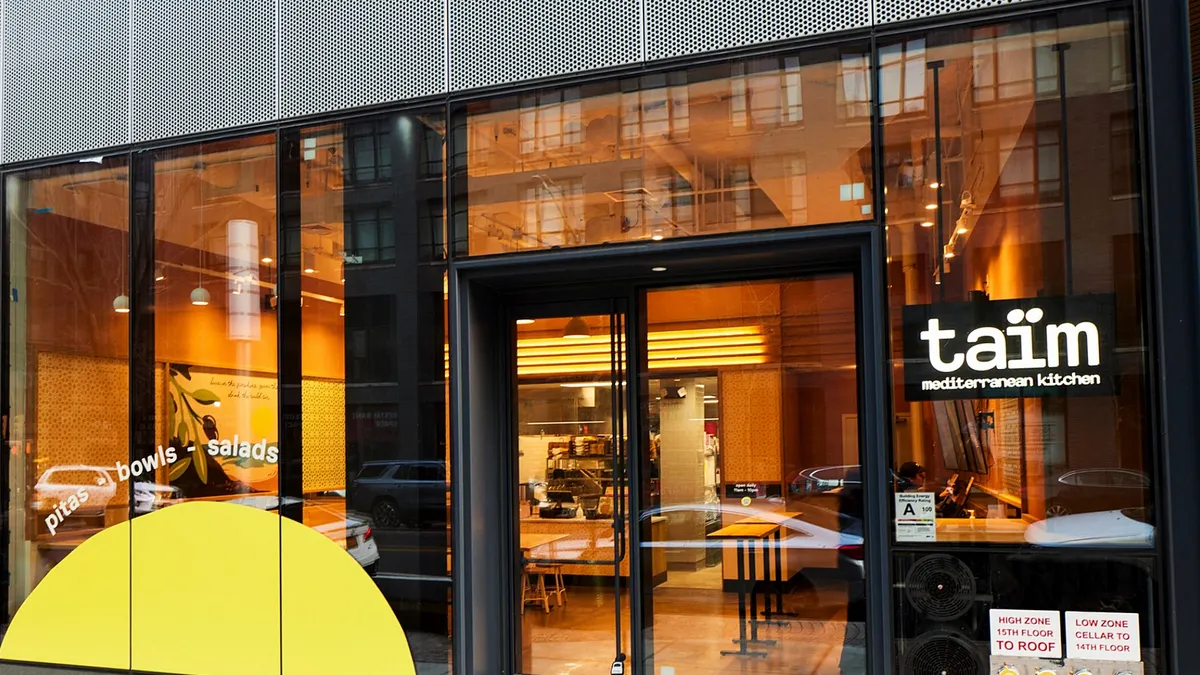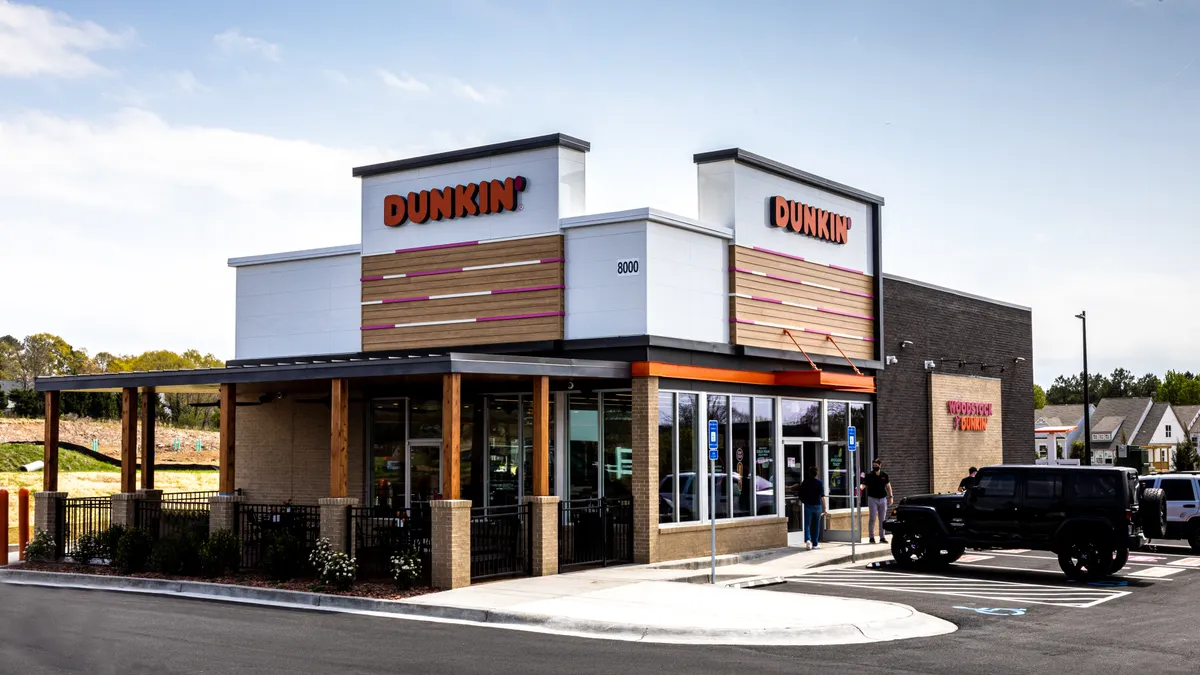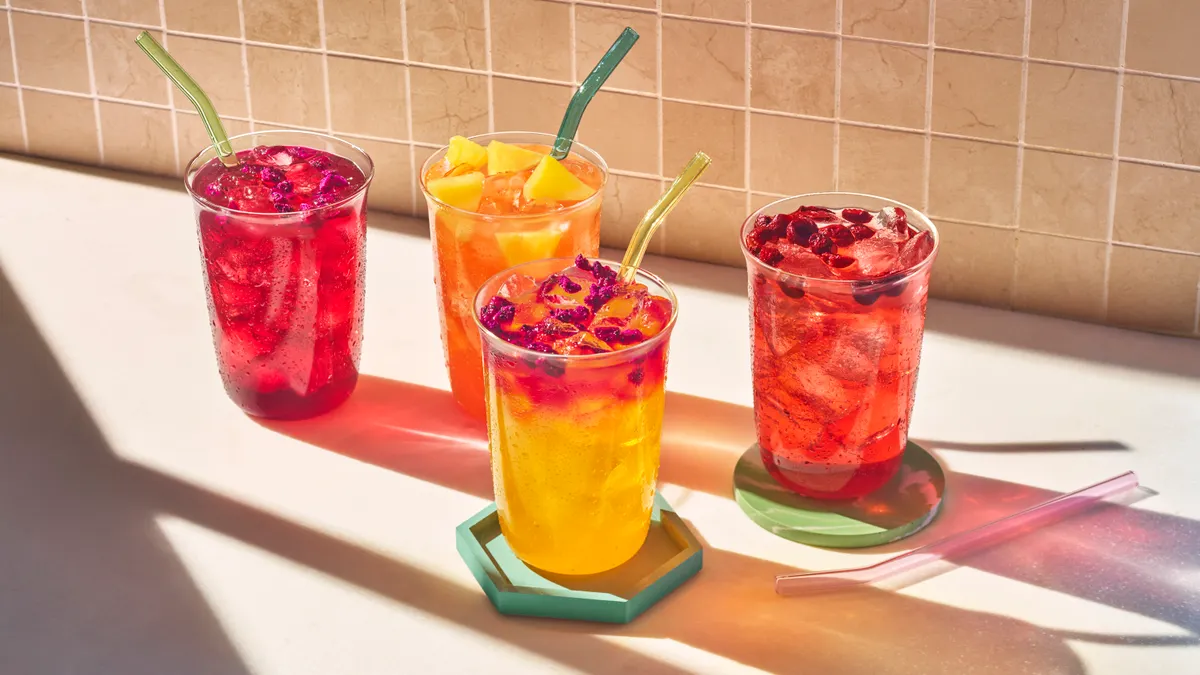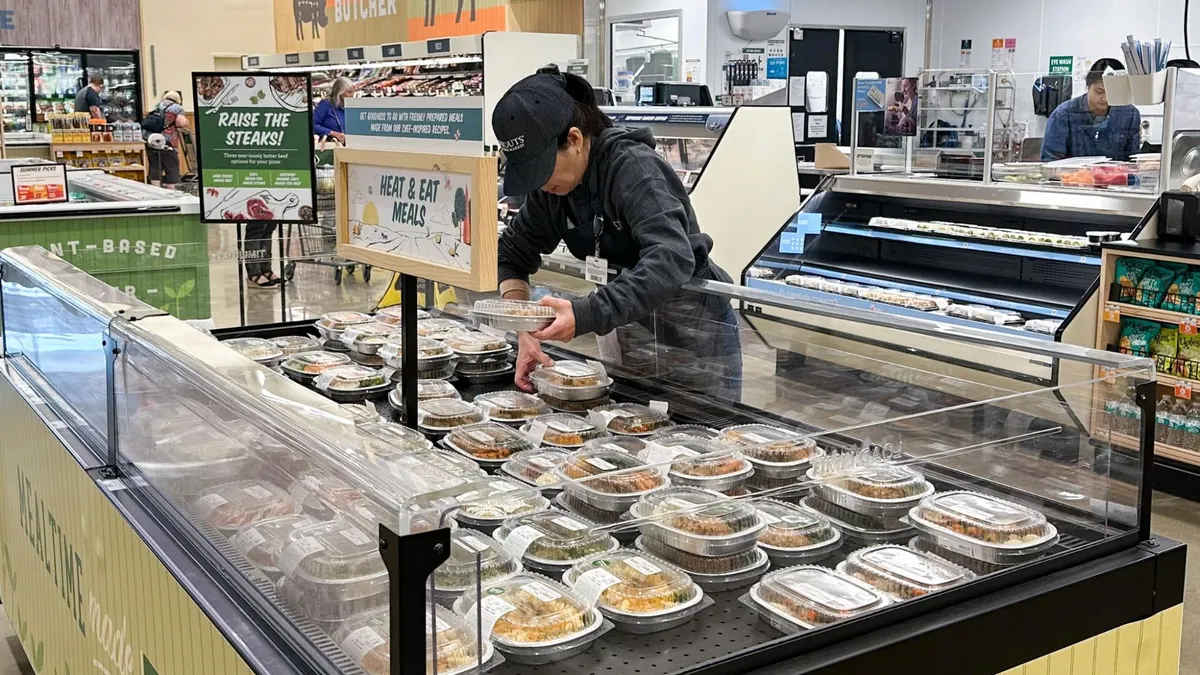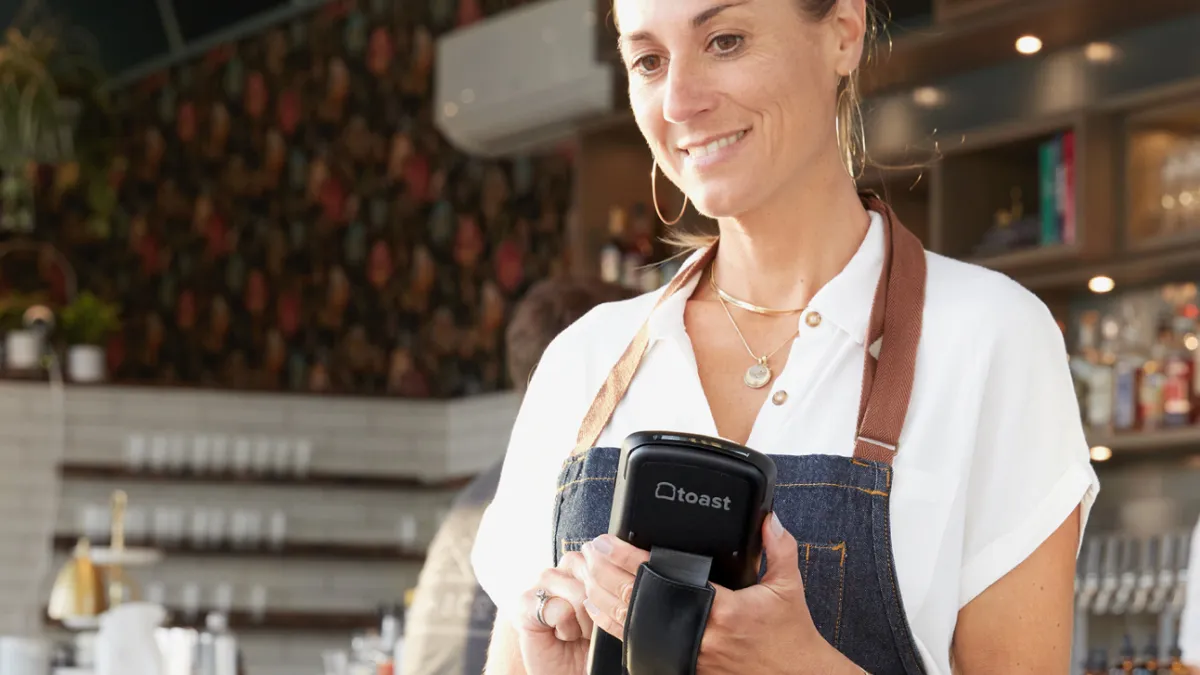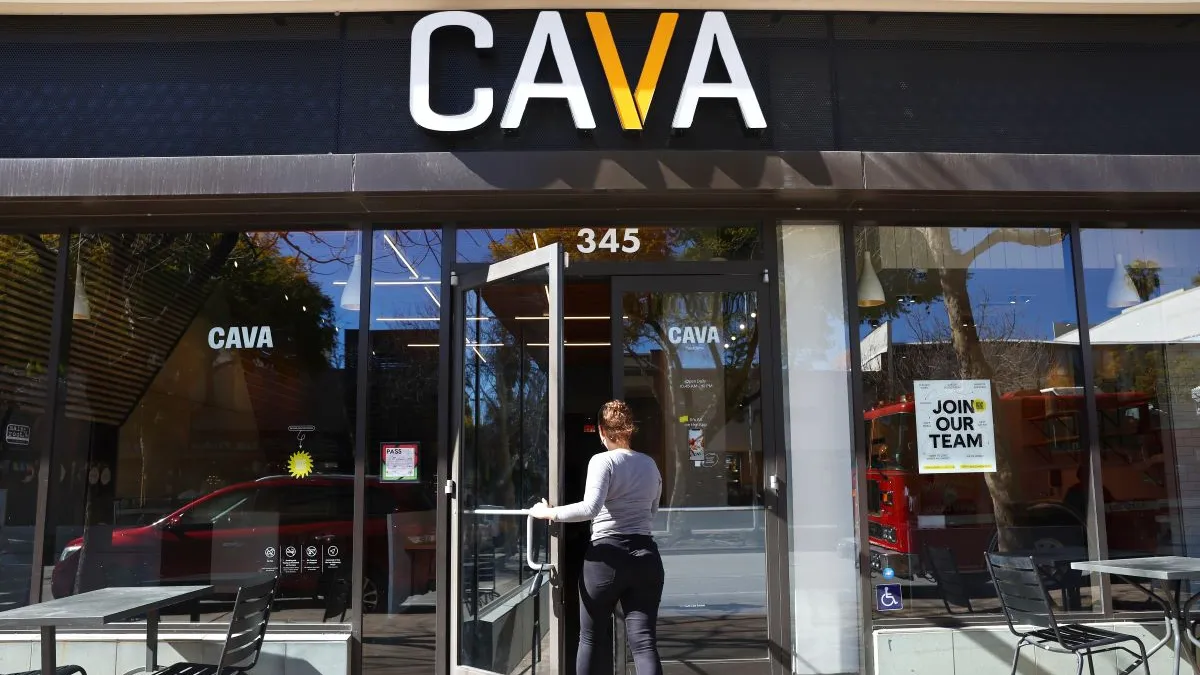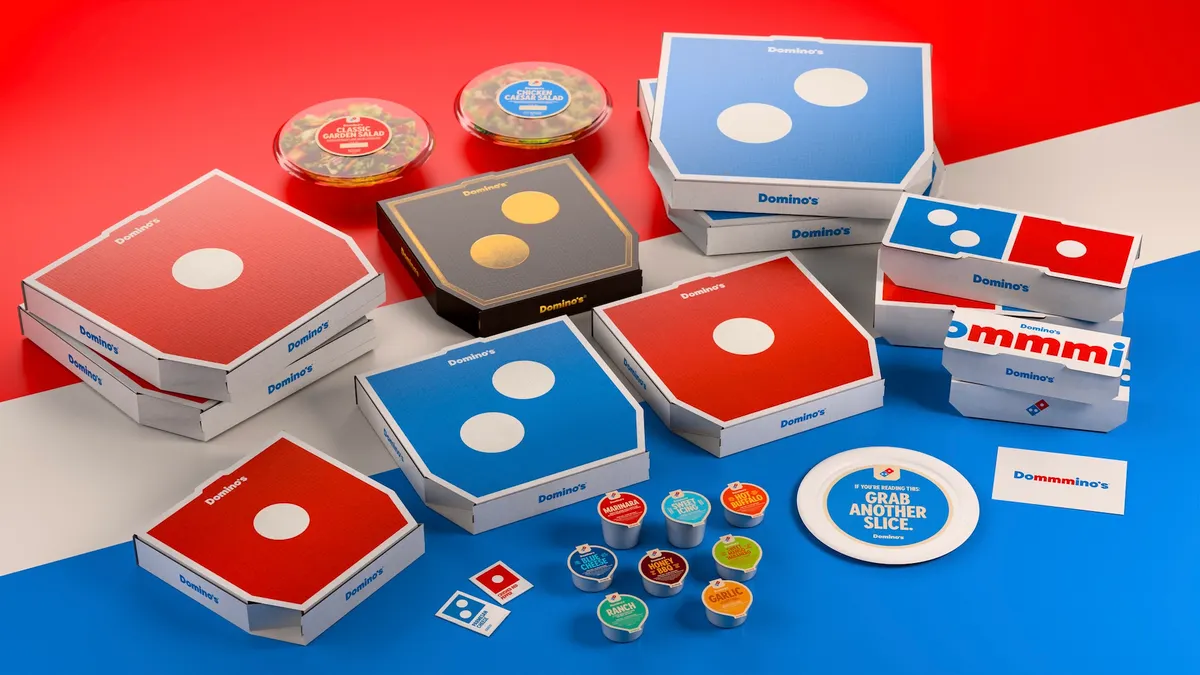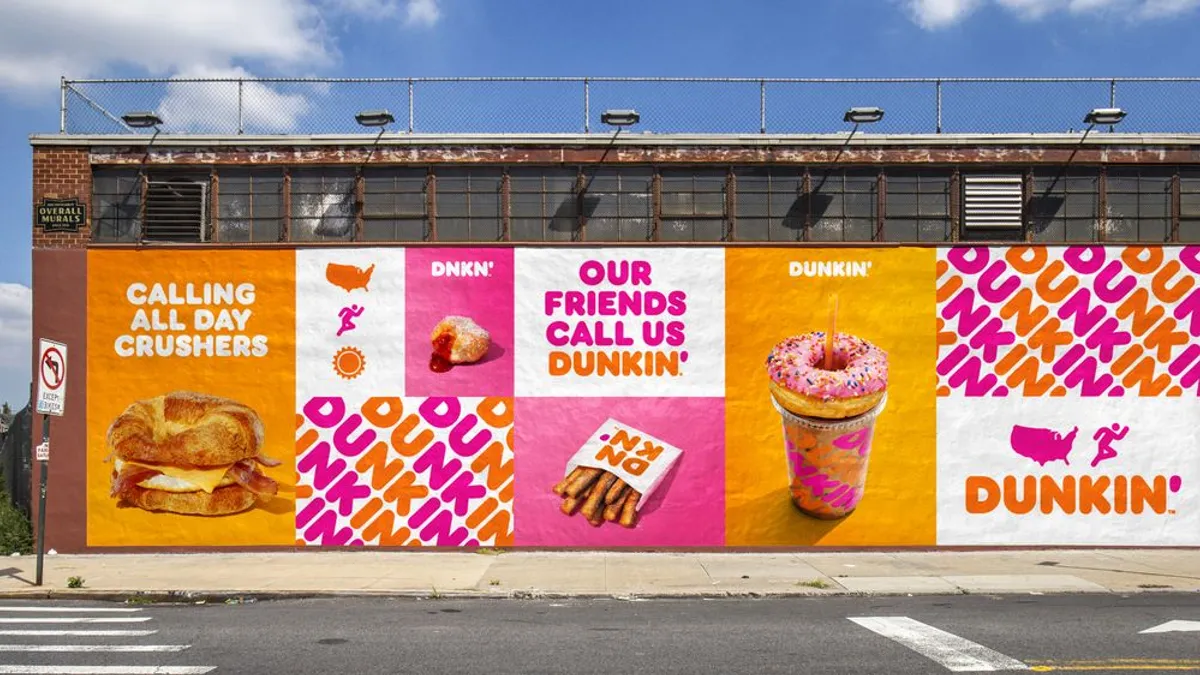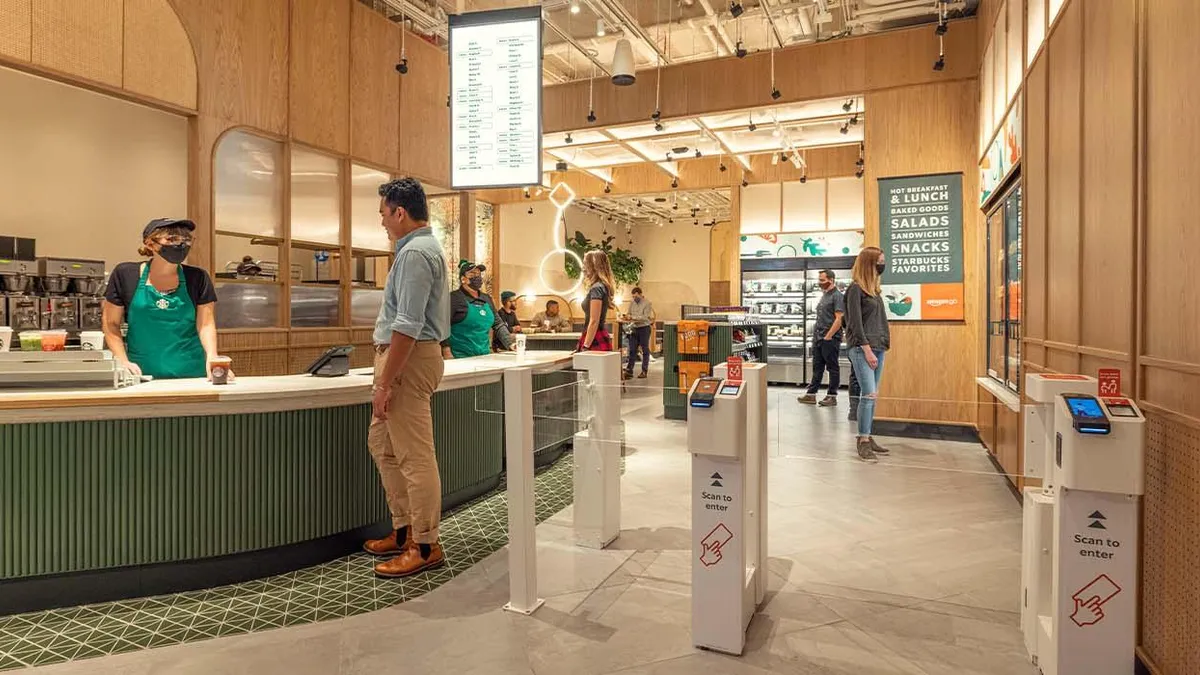In less than two and a half years as a public company, Cava has grown from 263 units to over 400, a 52% increase.
Like Chipotle, the chain’s entry to public markets and its strong unit economics have positioned it as a clear segment leader. But unlike Chipotle, which has thousands of units and more than three decades in operation, Cava is still early in its brand history, and the Mediterranean segment it leads is far from mature.
“Mediterranean food is going to continue to grow. I think there's opportunity for these small players,” said Mark Wasilefsky, head of TD Bank’s restaurant franchise finance group. “Are there opportunities for these regional players to grab market share? There absolutely are. But if you're going to open up and a Cava is going to open down the street, it's going to be a real concern.”
Wasilefsky said the versatility of Mediterranean cuisine, generational shifts and perceived health benefits will keep the segment growing. The smaller chains — ranging from would-be national contenders to secure regional powers — are looking to a variety of strategies, especially franchising, to try and compete with the company-owned store fleet at Cava.
Here’s a look at four of them.

Taim
Taim Mediterranean Kitchen is one of the smaller entrants in the sector — the brand had just 14 units when it launched franchising in July.
Gregg Majewski, founder and CEO of Craveworthy Brands, which owns Taim, said consumer appetite for Mediterranean food will only grow.
“Mediterranean gives you a leg up, because everybody is learning about the product and willing to try it,” Majewski said. “It is a healthier lifestyle that is becoming very, very common to eat multiple times a week.”
Majewski said Craveworthy planned on franchising Taim when it acquired the brand in 2024.
“We don't acquire brands that we don't franchise,” Majewski said.
Taim, in Majewski’s telling, sets itself apart from Cava by having a footprint set up for a better return on investment, and by offering consumers more of a street food feeling.
Once a brand is fully established, franchising can allow for rapid growth by leveraging franchisees’ local connections and capital, Majewski said.
“When the franchise system fully gets going, I can open up 50 to 100 restaurants a year without even trying,” Majewski said. “I can sell franchise territories a lot faster than they can open up corporate restaurants.”
Majewski said he expects Taim — and other franchised brands — to eventually out-build Cava.
“I expect us to pass them at some point, but I expect several to pass them,” Majewski said.
But Taim isn’t there yet, and Cava has a commanding lead. In Mexican fast casual, Chipotle has maintained its corporate edge over franchised competitors, both in scale and, generally, unit economics. Chipotle projects more than 300 openings for this year alone.
Taim’s development strategy starts in areas where Cava already has a strong presence — core urban markets in the Mid-Atlantic, parts of the Northeast and Illinois — dense college towns are also a target.
“I'm not going to go to suburban Middle America and start there, by any means,” Majewski said. “I'm gonna work out from those urban portions.”
Taim’s development strategy puts it on course for a direct competition with Cava over flavor and store experience. The chain strives to serve higher quality food than competitors — though most restaurants claim to shine on the superiority of their product.
“In the Cava vs. us battle, you know, I’d put my falafel against any of them,” Majewski said.
Taim emphasizes Israeli flavors, Majewski said, rather than a generic blend of Mediterranean ingredients.That difference often comes down to spices and prep techniques, however, which may not be immediately obvious to the end consumer.

Taziki’s Mediterranean Cafe
Taziki’s is one of Cava’s strongest competitors, with over 100 stores and an AUV north of $1.9 million for franchised stores and $2.3 million at company-operated locations, according to its franchise disclosure document. The brand is the second-largest in the Mediterranean fast casual segment, according to an April research note from TD Cowen.
CEO Dan Simpson said the success of the segment is due to the convergence to dual consumer trends: Aging boomers paying more attention to diet, nutrition and longevity, and younger generations interested in a balanced and sustainable lifestyle Simpson said. The increased cultural visibility of brands that are able to take advantage of those trends, Simpson said, compounds on itself.
In Simpson’s view, the competition isn’t within the Mediterranean sector, but between it and other fast casual sectors. Simpson jokingly suggested the various Mediterranean brands pool their marketing budgets for a national combined campaign to promote the cuisine.
“Let's compete with the Paneras and the Chipotles and everyone else — because even if you add all of us together, [Mediterranean] still represents such a small portion of all the restaurants, or even in the fast casual space,” Simpson said. “This is far from reaching its ceiling or maxing out its potential.”
Taziki’s, which is concentrated in the Southeast, is carving out a niche for itself as a brand that adapts Mediterranean flavors to make itself accessible to American palates. Simpson pointed to the chain’s name, a shortened version of the word Tzatziki, as an example.
Part of that effort to make itself accessible involves menu items outside of the relatively narrow slice of Greek cuisine known to the general public: gyros, spanakopita and the like, Simpson said. Taziki’s wants to have a broader menu that can bring consumers in on a broad range of occasions.
“There's all kinds of salads, and we're always playing with different salad option[s], all kinds of different grilled proteins, obviously cooking with olive oil and then layering in a glass of wine, which is part of our elevated experience, and then layering on some desserts. So you can do a lot with that palate,” Simpson said.
Taziki’s emphasis on experience starts before consumers enter the restaurant, Simpson said, with an outdoor patio with lights and planters full of olive trees — the inside of the restaurant is designed with consumer comfort in mind.
“All put together it feels a little bit more like a setting for casual dining,” Simpson said. “It's far, far away from a QSR experience.”
Taziki’s, which is about 40% company owned and 60% franchised, isn’t focused on swift unit growth — instead the chain is looking to backfill its existing markets in the Southeast and move into adjacent ones in the Midwest and South. Its priority in franchising is finding the right partner in the right place.
“We want a local operating partner,” Simpson said. “That’s typically why franchising works, because they're usually from there, have deep roots there, and that works.”

Nick The Greek
While Taziki’s Americanized its brand identity and broadened its menu in search of accessibility, Nick the Greek Americanized and simplified its menu, John Ramsay, head of franchising at parent company Yadav Enterprises, told Restaurant Dive.
The roughly 90-unit brand, which started in San Jose, California, limits its proteins to three gyro meat varieties: beef, chicken and pork, and two souvlaki types, grilled chicken and grilled beef. The menu is built around this narrow core, with proteins available in pita sandwiches, rice bowls, salads or a standalone plate, Ramsay said. This creates a relatively simple menu for operators.
Ramsay said that like Taziki’s, Nick the Greek views larger fast casuals — Panera, Chipotle, Raising Cane’s — as direct competitors, rather than other Mediterranean fast casuals.
Anil Yadav, a major Jack in the Box franchisee, owns both Nick the Greek and Taco Cabana, which means the brand shares one finance team, one legal team and one supply chain team. This dynamic yields considerable efficiencies that make it easier to expand through franchising.
Nick the Greek is concentrated in California, which remains an expansion target for the brand. While other competitors are looking to national expansion, Nick the Greek is looking to build fortress markets outside of California: Phoenix, Las Vegas, Reno, Nevada, and enclaves in Texas and Tennessee, according to Ramsay.
“Instead of going to New York or Florida right away, our priority is to really focus on the markets that we've already entered and building them out,” Ramsay said.
This could help the chain build up its store base and insulate it from direct competition with Cava, as the latter focuses on the Midwest and Florida as growth markets in the near future.
Ramsay said this strategy could get Nick the Greek to 400 restaurants within five years. That hinges on finding the right franchisees.
“Local market expertise is a huge important ingredient,” Ramsay said. “We almost always start with somebody with experience and somebody who's already established restaurants within that market.”
The length of franchise agreements — 20 years — makes it vital to find operators who can grow a brand over a period of years, rather than topping out at one or two units, Ramsay said.

The Halal Guys
One brand that learned the importance of franchisees the hard way is The Halal Guys, which saw eight out of 88 franchised units close in 2024, according to its franchise disclosure document.
Ahmed Abouelenein, the CEO of The Halal Guys, said those closures were necessary to get operators out of the system who weren’t meeting the brand’s standards.
“It impacts the rest of the franchisees positively because you don't get bad brand reputation from that site,” Abouelenein said.
Like Nick the Greek, The Halal Guys has a simple menu, consisting of just four main items: chicken, gyro meat, rice and falafel. This goes back to the brand’s origins as a New York City food cart, where space and efficiency come at an extreme premium.
“That makes training easy,” Abouelenein said. “If the training was conducted correctly, it becomes very, very easy to execute.”
Right now, The Halal Guys is focused on controlling the quality of its restaurants and protecting its brand.
“We don’t want the brand to just grow everywhere without control of the food quality, because food is the soul of the brand. If the food gets compromised, there is no point of growth,” Abouelenein said.
But the growth of demand for Mediterranean food — both in the U.S. and in other countries — gives The Halal Guys confidence in its model, and Abouelenein expects the chain to sell enough franchisees to hit 300 to 400 units within a few years.
That growth in the U.S. will come from a mix of geographies, Abouelenein said. The chain will grow in states where it already has a presence — 21 states and Washington, D.C., according to its FDD — but it will also eye new market entries as a way to introduce it to new consumers.
Abouelenein said he expects rapid growth to be the story for a lot of Mediterranean fast casual brands.



